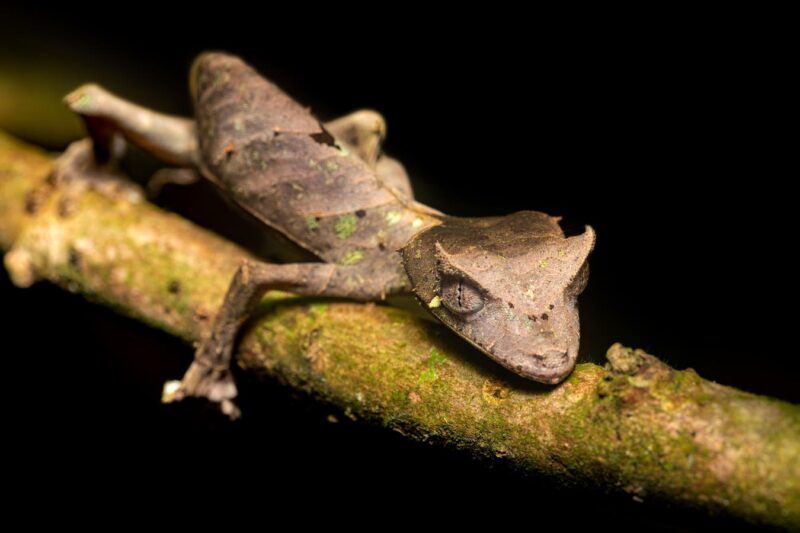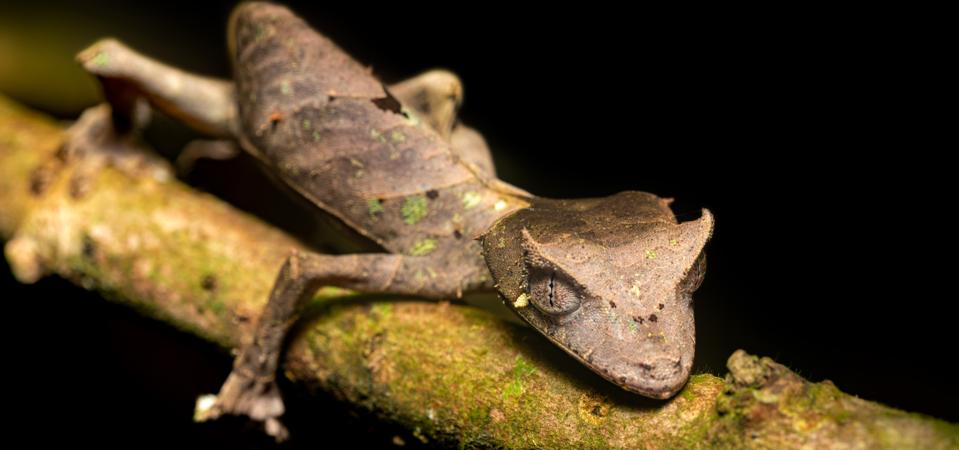Scientists estimate there are over 8 million animal species on Earth. Over a million of these species have been named. Here’s a shortlist of the names that range from oxymoronic to head-scratching to downright weird.
getty
Taxonomy — the science of naming, defining, and classifying organisms — is a critical part of biology. Linnaean naming conventions help scientists communicate across languages and disciplines, providing a standardized system for identifying species. But common names, which often reflect local language, morphology, behavior, or even pop culture references, can be… less formal. And, occasionally, downright ridiculous.
With over a million species officially named, and millions more yet to be described, the list of animal names includes many bizarre and curious entries. Some arise from genuine morphological oddities; others are the result of overcaffeinated field biologists trying to keep things interesting. Here’s my (highly opinionated, but biologically informed) list of the ten most absurd animal names — ranked not just by silliness, but by how surprisingly insightful or misleading they are from an evolutionary perspective.
1. Sparklemuffin (Maratus jactatus)
While it may sound like a dessert you’d likely be served at a kid’s birthday party, the Sparklemuffin is actually a marvel of evolutionary sexual selection. This small Australian peacock spider uses intricate dance moves and an iridescent abdomen to court females. The name “Sparklemuffin” came from the researchers who discovered it — one of whom let an undergraduate nickname it. Sure, the name may not scream “scientific rigor,” but it does capture an important biological point: in some species, especially spiders, eye-catching males with flamboyant displays often gain reproductive success. Nature doesn’t just reward the fittest; in some cases, it’s the flashiest who takes the prize.
2. Slippery Dick (Halichoeres bivittatus)
The slippery dick fish, despite its giggle-worthy name, is a fast-swimming wrasse known for its vibrant colors and ability to change sex.
getty
The Slippery Dick is a species of wrasse found in the warm waters of the western Atlantic. Its name, while laughable to most, actually refers to its slippery scales and quick, darting motion in the water. Biologically, it’s an interesting fish for another reason: it’s a sequential hermaphrodite, meaning it can change sex from female to male depending on social dynamics in its group. So the name, in addition to being ridiculous, might also be a bit of a misnomer. And most importantly, it can distract from the real evolutionary intrigue — a fluid sexual system that maximizes reproductive output.
3. Satanic Leaf-Tailed Gecko (Uroplatus phantasticus)
The satanic leaf-tailed gecko is a master of camouflage straight out of a Halloween nightmare.
getty
This small, nocturnal gecko from Madagascar is an expert in camouflage, with a tail that mimics the form of a decaying leaf. The foreboding “satanic” moniker likely comes from its eerie red eyes and horn-like projections above its head, which give it a devilish appearance. From an evolutionary standpoint, its cryptic coloration and mimicry are what any biologist would immediately cite as textbook examples of natural selection hard at work to avoid predators. While the name might be unnecessarily ominous, it’s a reminder that nature often favors the weirdest disguises as they might elicit fear in predators.
4. Blobfish (Psychrolutes marcidus)
Infamous from internet memes and voted “World’s Ugliest Animal” in 2013, the Blobfish is a deep-sea species that looks like a melted scoop of Jell-O when brought to the surface. However, we might be quick to judge there: it only looks that way because it’s being viewed out of its native, high-pressure environment. At 1000 meters below sea level, the Blobfish’s gelatinous body structure is an essential adaptation to extreme pressure — its “ugliness” is a byproduct of decompression. Evolutionarily, it’s actually a fascinating example of deep-sea specialization.
5. Spiny Lumpsucker (Family: Cyclopteridae)
Round, clumsy, and covered in tiny spikes, the spiny lumpsucker looks like a cartoon gone wrong—but it’s perfectly adapted for life on the seafloor.
getty
If you read this creature’s name twice just to be sure, that’s understandable. These tiny, globular fish are covered in small, bony protrusions (“spiny”) and use modified pelvic fins to adhere to rocks (“sucker”). With their home in the cold waters of the North Pacific, spiny lumpsuckers are poor swimmers but adept at avoiding predators thanks to their sedentary, camouflaged lifestyle. The name may sound like playground taunting, but the fish is a classic of evolutionary trade-offs animals have to make in order to survive: limited mobility in exchange for excellent attachment and concealment.
6. Mountain Chicken (Leptodactylus fallax)
Before you make any assumptions, this is not a bird. This is, in fact, a large, terrestrial frog found in Dominica and Montserrat, which received its name from locals who once hunted it for food. Unfortunately, it’s currently one of the most endangered amphibians in the world due to chytrid fungus, a deadly disease that targets amphibians, and habitat loss. The name “mountain chicken” highlights a theme you’ll find repeating in zoological naming worldwide — common names often reflect human utility or perception, not biology. And in this case, the perception was “tastes like chicken.”
7. Screaming Hairy Armadillo (Chaetophractus vellerosus)
Meet the screaming hairy armadillo—yes, that’s its real name—a pint-sized burrower from South America known for its surprisingly loud squeals and fuzzy exterior.
getty
This animal’s name is so true to its appearance and behavior, it may feel a bit on-the-nose. The small, nocturnal armadillo native to South America owes its incredibly specific name to two of its core traits. This first is a coat of bristly hair that distinguishes it from its more armored relatives. And the second, and probably more defining characteristic, is its high-pitched vocalizations in retaliation to threats. Its screaming serves as a defense mechanism to startle predators. While the name sounds like something from a horror movie, it accurately captures how communication evolves alongside defensive morphology.
8. Tasselled Wobbegong (Eucrossorhinus dasypogon)
The tasselled wobbegong, with its shaggy fringe and flattened body, is a master of underwater ambush, blending seamlessly into the ocean floor like a camouflaged rug with teeth.
getty
This bottom-dwelling shark from the Indo-Pacific has what are referred to as dermal flaps resembling tassels around its mouth, helping it blend into coral and seafloor habitats. The word “wobbegong” comes from an Australian Aboriginal language and roughly translates to “shaggy beard.” The tassels, like all evolutionary oddities, aren’t there for flair. They serve the necessary function of camouflage and possibly lures to attract prey. The name is ridiculous-sounding, yes, but it’s also quite literal and, to top it off, biologically accurate.
9. Raspberry Crazy Ant (Nylanderia fulva)
These invasive ants get their name from their erratic, unpredictable movement patterns. The “raspberry” tag, however, has nothing to do with fruit — it comes from Tom Raspberry, the Texas exterminator who first identified the species in the U.S. in 2002. Native to South America but now spreading across the southern U.S., these ants are a serious ecological threat — outcompeting native species and damaging electrical equipment. Their erratic motion isn’t just quirky; it’s an evolved foraging strategy that makes them harder for predators to predict.
10. Booby (Genus: Sula)
Notice the courting behavior of the blue-footed booby. These can be found on the Galapagos Islands.
getty
Boobies are seabirds with large webbed feet, particularly known for the blue-footed booby. The name comes from the Spanish bobo, meaning “fool” or “clown,” given because early sailors thought the birds were easily caught due to their lack of fear around humans. Ironically, what appeared to be foolishness is actually energy conservation — a smart evolutionary strategy for survival on remote islands with few predators. The joke’s on us.
While these names might evoke laughter, double takes, or curiosity, each reflects some facet of the animal’s morphology, behavior, or evolutionary history — even if unintentionally. In some cases, the names are relics of cultural context. In others, they offer insight into the creative side of taxonomy. And occasionally, they’re just what happens when scientists work long field hours with little sleep.
As more species are discovered — and as taxonomists continue their vital work of cataloging Earth’s biodiversity — one thing is clear: the names may sometimes be absurd, but the science behind them is anything but.
Are you an animal lover who owns a pet? Take the science-backed Pet Personality Test to know how well you know your little friend.









